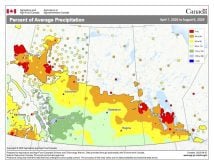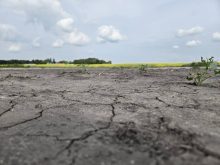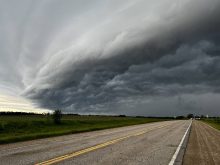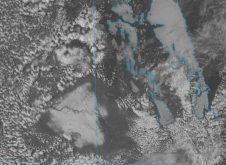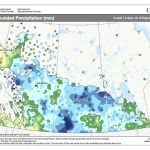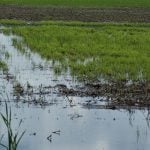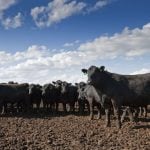As we slowly ease our way into fall I thought it might be a good time to take a bit of a look around and explore some of the bigger weather stories from around North America and the world.
Let‘s begin our look at the top and bottom of the world by examining what has been going on with Arctic and Antarctic sea ice. With the summer coming to a close across the Arctic it appears the extent of sea ice hit a minimum on Sept. 13. If this is the case, then the minimum came in pretty close to the average date of Sept. 15.
Read Also
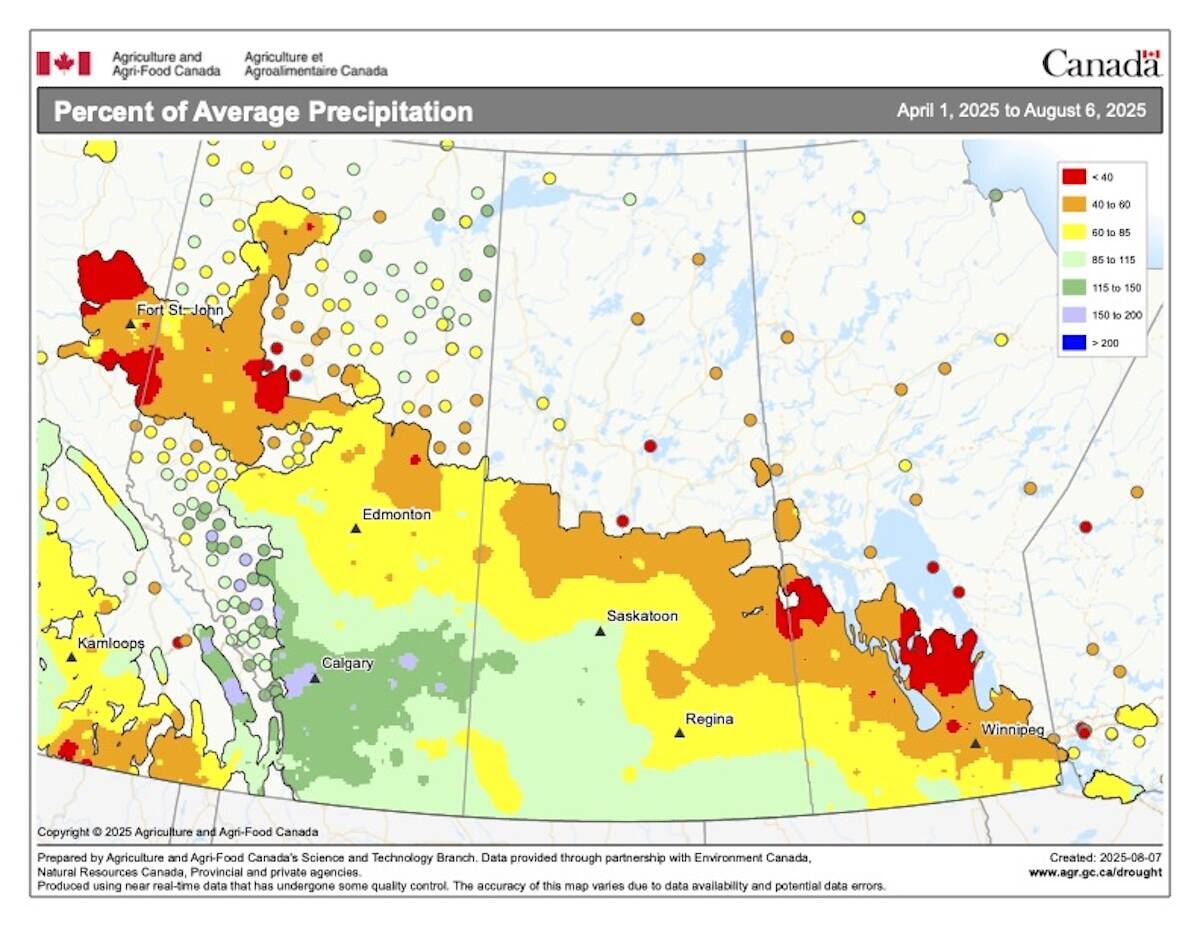
Heatwaves and upper highs
Weather expert Daniel Bezte looks at heat waves and the climate factors that lead to extended periods of high heat in the Prairies.
I didn‘t discuss Arctic sea ice extent this spring and summer because, well, nothing really unusual happened in the Arctic this summer. Ice extent was still very low compared to the long-term average (sixth-lowest on record) but was not nearly as low as the record-breaking year we saw last year. Ice extent fell to 5.1 million square kilometres this year, 1.12 million square km below the 1981-to-2010 average, but well above last year‘s 3.41 million square km.
The reason for the big difference is simply that conditions over the Arctic this summer were not very favourable for ice melt. Low pressure tended to dominate over the Pole, which resulted in a cooler, cloudier summer. One point of particular interest is that the Northwest Passage remained closed this summer, after opening up for the past couple of years.
Around Antarctica, winter is just ending and sea ice extent appears to have reached its maximum. While the Arctic is seeing a fairly rapid decline in sea ice over the last couple of decades, the Antarctic has seen an increase in sea ice. On Sept. 18, its sea ice extent hit 19.44 million square km, which tied the record high set only last year.
ACEs low
Another interesting weather story so far this fall is actually a non-weather story. So far in 2013 the hurricane season over the Atlantic Ocean has been one of the quietest on record. After predictions that this would be an active hurricane year across the Atlantic, the first half of the hurricane season has seen very little activity. So far this year there have only been two. Hurricane Humberto became the Atlantic‘s first hurricane on Sept. 11, which ties it with 2002 as the latest appearance of the season‘s first hurricane. The second was Ingrid, which formed off the east coast of Mexico and briefly gained hurricane strength on Sept. 15 before weakening and eventually moving inland, bringing heavy rains to that country’s Veracruz region.
With only two short-lived hurricanes so far this year, it’s not surprising that accumulated cyclone energy (ACE) is at or near a record low. ACE, a measure used to express the activity and destructive potential of tropical cyclones, is an accumulated sum for the season. So far 2013 has an ACE across the Atlantic of 24 units. This compares to the seasonal average of 110, and the record of 260 set in 2005. With not much activity forecast for the Atlantic over the next week or so, it doesn‘t look like there will be a big end to this year‘s hurricane season.
Over Boulder
The final weather story is probably one of the biggest stories of the year, and very reminiscent of the rainfall and flooding that occurred in Alberta earlier this year. In a weather setup that virtually mimicked what happened in Alberta, parts of Colorado saw historic rainfalls and flooding around the middle of September that resulted in billions of dollars in damage.
What set the stage for this record rainfall event was a large area of high pressure over Western Canada along with a flow of tropical moisture coming out of the Gulf of Mexico. This setup remained stationary for nearly seven days, allowing huge amounts of rain to fall as the tropical moisture was forced up the mountains, where it condensed and fell as rain. Weather balloon soundings from around Boulder recorded the greatest amount of atmospheric moisture ever recorded in that region during September. All that moisture fell as rain and the rains just wouldn‘t stop. When all was said and done, Boulder received 17.16 inches of rain in a week — a truly remarkable amount.
When there are large rainfall events, we try to put it into perspective by coming up with a frequency of such a large event. We start to get impressed if it is considered to be a one-in-100 year event, and are truly amazed if it’s a one-in-500 year event. For the Boulder region, they crunched the rainfall data over the last 100 or so years and came up with a frequency chart. It turns out that 5.87 inches of rain falling over a one-week period would constitute a 1-in-1,000-year event. Boulder received three times that much rain, so it truly was an amazing weather event!
Let‘s hope we don‘t have any more epic rainfall or, dare I say, snowfall events that we need to talk about this year.



